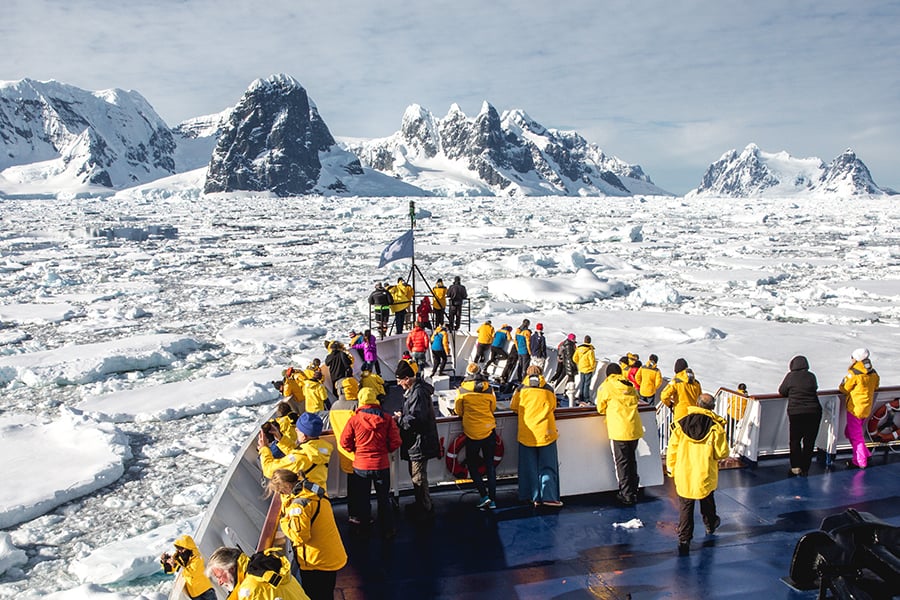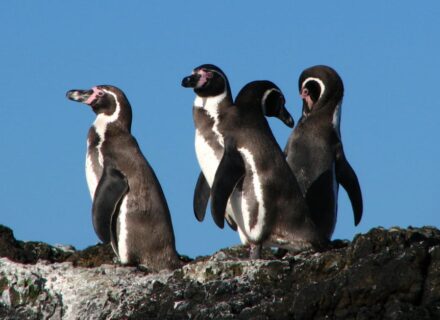Visiting Antarctica has transformed from an arduous expedition to a remarkable adventure, accessible to travelers eager to witness its stunning beauty and unparalleled wildlife. With various itineraries available, this guide will explore the most popular cruise options, what to consider when selecting an itinerary, and additional ways to experience the Antarctic wonder.
Options for Itineraries in Antarctica
When planning an Antarctic adventure, travelers will find an array of itineraries to choose from, each offering unique experiences and sights. The following sections break down the most popular routes:
Drake Passage Cruises
Most travelers head to Antarctica via cruise ships departing from South America, with Ushuaia, Argentina, serving as the primary embarkation point. To reach the Antarctic continent, passengers must navigate the renowned Drake Passage—a stretch of water about 800 km long that separates South America from the South Shetland Islands, adjacent to the Antarctic Peninsula.
The Drake Passage is infamous for its turbulent waters, driven by the powerful Antarctic Circumpolar Current and exposed to fierce westerly winds. While the conditions can be rough, modern cruise ships are well-equipped to handle the journey, often providing a comfortable experience despite potential seasickness. Many Drake Passage cruises also offer wildlife sightings, including marine mammals and the first glimpses of the iconic Antarctic icebergs.
Air Cruises
For those wishing to bypass the potential discomfort of crossing the Drake Passage, air cruises present an appealing alternative. A short flight from Punta Arenas, Chile, to King George Island in the South Shetland Islands takes only a few hours compared to the days required by ships. Upon arrival, travelers can join cruises that explore the wonders of the Antarctic Peninsula.
Air cruise options include round-trip flights to the South Shetland Islands, avoiding the Drake entirely, or hybrid itineraries that allow travelers to experience both air travel and a scenic sea journey across the Drake Passage.
Antarctic Peninsula Cruises
The Antarctic Peninsula is the most popular destination on the continent, known for its accessibility and relatively mild conditions. This region boasts breathtaking landscapes, featuring towering mountains, glaciers, ice shelves, and abundant wildlife, including vast colonies of penguins, seals, and various seabirds.
Antarctic Peninsula cruises take travelers to iconic locations, such as the flooded caldera of Deception Island and the picturesque Lemaire Channel, often referred to as “Kodak Alley” for its stunning views. Visitors can enjoy various activities, including Zodiac excursions, kayaking, hiking, skiing, and even camping beneath the pristine Antarctic sky.
Basecamp Itineraries
For the adventurous traveler seeking an immersive experience, Basecamp itineraries offer a unique approach to exploring Antarctica. These itineraries emphasize time spent on land rather than at sea, providing ample opportunities for kayaking, hiking, glacier walks, and snowshoeing in the remote and breathtaking landscapes of the Antarctic Peninsula.
One highlight of Basecamp itineraries is the chance to camp in Antarctica—an unforgettable experience that may include sites near the renowned Paradise Bay or Damoy Point.
Antarctic Circle Cruises
Cruises to the Antarctic Circle, located at approximately 66 degrees south latitude, are a thrilling option for those wanting to cross this significant boundary. These cruises typically operate in January through March when seasonal ice melts make the area more accessible.
Travelers who embark on these adventures can experience relatively untouched areas, such as Margarita Bay in the upper Antarctic Peninsula, and the remote seas of Weddell and Ross, showcasing the pristine beauty of the Antarctic landscape.
Antarctic, South Georgia, and Falkland Islands Cruises
For those with the time and interest to explore beyond the Antarctic Peninsula, combining visits to the subpolar islands of South Georgia and the Falkland Islands can create an enriching experience. These itineraries weave together visits to the British Overseas Territories, offering a glimpse into their captivating histories—such as the Falklands War and Ernest Shackleton’s incredible journey across South Georgia to rescue his stranded crew.
South Georgia, known for its thriving wildlife, is home to an impressive variety of seabirds, penguins, and seals, making it a destination worthy of its own exploration.
Ross Sea and East Antarctica Cruises
The Ross Sea, situated well below the Antarctic Circle, remains a less-visited gem, offering a dreamlike landscape defined by its massive ice shelves and active volcanoes, like Mount Erebus. Cruises in this region allow visitors to witness the largest ice shelf on Earth, the Ross Ice Shelf, and historic sites such as the huts of famous explorers Robert Falcon Scott and Ernest Shackleton.
Weddell Sea Cruises
On the opposite side of the Ross Sea, the Weddell Sea is renowned for its breathtaking solitude and pristine waters. Cruises through the Weddell Sea take travelers to explore the stunning landscapes of the eastern Antarctic Peninsula, showcasing colossal tabular icebergs and spectacular ice fronts.
Wildlife enthusiasts can also expect to see the northernmost emperor penguin colonies on Snow Hill Island, as well as abundant Adélie penguins, humpback whales, orcas, and leopard seals.
Choosing an Antarctic Cruise Itinerary: Factors to Consider
Selecting the right Antarctic itinerary can be overwhelming given the multitude of options. Here are key factors to keep in mind to ensure your choice aligns with your interests and preferences:
Time and Cost
Even with limited time, visiting Antarctica is a worthwhile experience, given its uniqueness. For shorter trips, consider a quick 5-day itinerary or a 7-day option that includes flights to maximize your time on the continent.
Most travelers find that a 10- to 14-day cruise offers ample opportunity to delve into the Antarctic Peninsula and, for some, venture across the Antarctic Circle. For those with more flexibility, longer cruises lasting 21 days or more can provide in-depth explorations, including the FSG itinerary or a semicircular voyage between South America and New Zealand through the Antarctic Peninsula and Ross Sea.
Air travel is generally pricier than ship travel, and extending your trip to more remote destinations or including special activities such as diving or scenic helicopter rides will increase costs.
Scenery
Antarctica is home to breathtaking landscapes, each region offering distinct beauty. The Antarctic Peninsula is particularly photogenic, while remote mountain ranges, such as the Ellsworth Mountains and the Transantarctic Mountains, offer awe-inspiring vistas for adventurous travelers who seek to explore farther.
The mesmerizing icebergs and expansive ice shelves in the Ross and Weddell Seas provide stunning visual experiences that highlight the continent’s otherworldly charm.
Wildlife
Antarctica is famed for its extraordinary wildlife. Depending on the chosen itinerary, travelers may encounter various species, including penguins, seals, and whales. The wildlife viewing experience can vary significantly depending on the season and specific destinations.
For example, South Georgia is known for its dense wildlife populations, while specific areas in the Antarctic Peninsula offer great opportunities to spot penguins and seals in their natural habitats.
History
Exploring Antarctica is also an opportunity to engage with its rich exploration history. Many itineraries include stops at historic sites such as Shackleton’s and Scott’s huts, providing a deeper understanding of the continent’s past and the challenges faced by early explorers.
Travelers may also learn about significant events, such as the Falklands War, and how they shaped the geopolitics of the region.
Immersion
If you seek a more immersive experience, look for itineraries that offer longer land stays, opportunities for adventure activities, and the chance to camp in unique locations. Basecamp itineraries are particularly popular for those who want to fully engage with the Antarctic environment.
Adventures
Consider what types of activities you wish to pursue while in Antarctica. Whether you are interested in kayaking, hiking, or simply soaking in the stunning landscapes, many itineraries cater to adventurous spirits. Specialized activities may require longer trips or specific itineraries that prioritize land exploration.
Geography
Different itineraries highlight various regions of Antarctica, from the classic destinations in the Antarctic Peninsula to the more remote areas of the Ross and Weddell Seas. Researching the geographical highlights of each itinerary can help you choose the route that best aligns with your interests.
Combined Itineraries in Antarctica
Travelers can also explore combined itineraries that mix different routes, enhancing their Antarctic experience. For example, a journey may incorporate aspects of the Antarctic Peninsula, South Georgia, and the Falkland Islands, providing a broader perspective of the subpolar region.
Other Options for an Antarctic Itinerary Without a Cruise
While cruises are the most popular method to explore Antarctica, alternative options exist for those who prefer a different approach. These may include guided land tours or organized excursions that focus on specific aspects of the Antarctic experience, such as wildlife photography or research programs.
Some travelers may choose to participate in educational programs or volunteer opportunities in research stations, allowing for deeper engagement with the Antarctic environment and its preservation efforts.
Conclusion
The journey to Antarctica is a bucket-list experience, and selecting the right itinerary is crucial to making the most of your adventure. Whether you choose to cruise through the notorious Drake Passage, embark on an air journey, or explore the stunning landscapes of the Antarctic Peninsula, each route offers unique opportunities to witness the breathtaking beauty and extraordinary wildlife of this remote continent. Consider the factors outlined in this guide, and you’ll be well on your way to planning an unforgettable Antarctic expedition.



